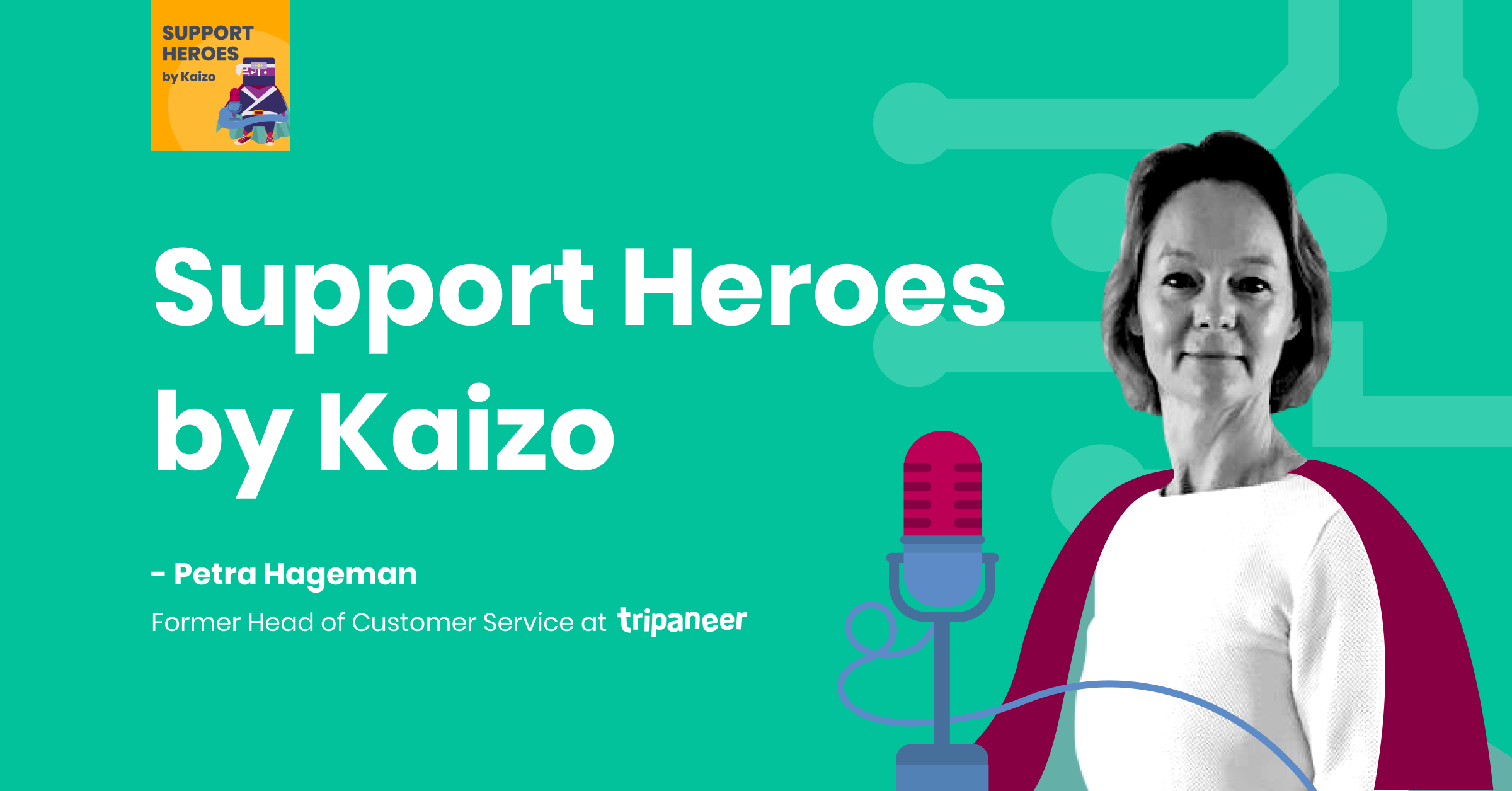Click ‘subscribe’ above to listen or download from Apple Podcast, Spotify, and Google Podcast
The third of our release day episodes of Support Heroes by Kaizo featured Petra Hageman, Head of Customer Service at Tripaneer.
In this episode, Petra shares her tips, insights and lessons learned in workforce management, specifically applied to customer support divisions.
Key Takeaways
- Using data & tooling for workforce management
- Hiring to breed customer satisfaction and support success
- Essential tips for professional success
Using data & tooling for workforce management
“Something I notice quite often is that a lot of customer service environments don’t realise how much data they had…”
- Petra notes that data is the key to effective planning and effective planing leads to the overall success of the depertmat. One cannot satisfy customers if one does not have enough people to deal with requests. It’s as simple as that.
“The beauty of the customer service environment is that there is a lot of data. The difficulty sometimes is that there’s so much data that it’s difficult to analyse it”
- Using data to plan effectively is something that Petra dove into and eventually made a career out of- working as a workforce management expert for many years.
- But how does one use data effectively to plan? The answer is: tooling.
“In my last role we didn’t have a lot of tooling. We used the Kaizo tool to see the data and make sense of it because there’s a lot of data in zendesk but it’s not always easy to interpret it and make it visible to the agent”
- Tooling helps collect the data and makes it actionable. Which is why Petra first encountered Kaizo.
- The costs of not planing effectively, can always be seen clearly. It starts a domino effect that touches every aspect of the department.
Hiring to breed customer satisfaction and support success
“Very often there’s a lot of talented people who start out in customer service but that join a company to get somewhere else”
- Many come into customer support looking to work their way into another role in a company but Petra doesn’t see this as an issue in-and-of itself.
“A tip when recruiting- check what the [applicant’s] motivation is. Even if a person wants to move into a different department or a different position in the end, [as Petra did herself] it’s important to check if they have a customer service heart”
- A customer service hearts means someone is really motivated to provide the customer with their best service. This is the intrinsic empathy and ability to listen to someone that is so often quoted as being the central characteristic that leads to success as a customer service/support agent.
- Compromising on these attributes, however, is something unacceptable to Petra. For instance, if your planning goes aerie and you suddenly need more agents, hiring lackluster candidates will cost you more than it’s worth.
“Especially for customer service environments that are scaling fast…it’s super important to use the data and start the recruitment process on time. Making concessions [when hiring] always backfires”
Essential tips for professional success
1. Taking a break(s) is important
“People forget to take their break or they take mini breaks in between. Sometimes it’s really good to dedicate 10/15 min, half hour or hour to reset yourself”
- It is important to take a break during your work day. Sometimes work days can be overwhelming and demotivating so taking a proper break can help provide you with the mental reset you need to march on.
- Especially for support agents, the majority of the interaction they have with customers are negative and these types of interactions can be exhausting.
- So it’s important to stay positive and take care of yourself.
2. Being more effective
“Solve a problem for 80% and leave the other 20% because at that time the next problem that you can solve at 80% is already more impactful than solving the other 20% from the first problem”
- In order to be more efficient and more impactful in a job packed with issues waiting for you to solve them, you should almost finish solving a problem but don’t completely round it out.
“Try this, if you’re not used to this, for a couple of weeks and you will see that you will make a much larger impact”
3. Learn to say no
“By being eager to move forward, you also say yes a lot. However, the value of saying no is also extremely important, because then people start to appreciate your yes a lot more”
4. Delegation as situational leadership training
“If you delegate you always need to check if what you delegated was done properly. Make sure that you really do check that. This is a lot of situational leadership training where you can really see what people can handle”


